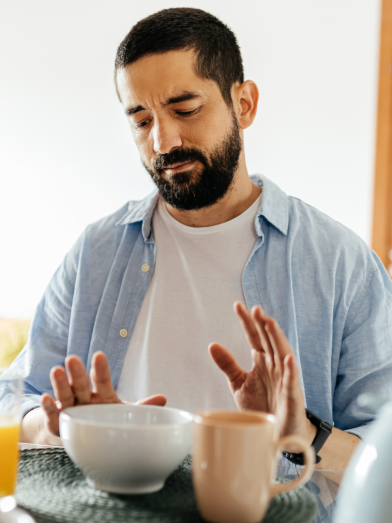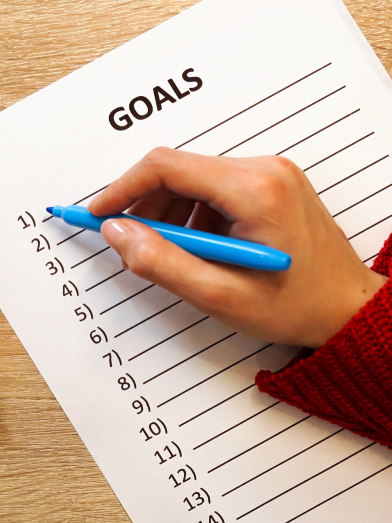Deciding whether to exercise before or after eating and choosing the right foods for pre- and post-workout nutrition can be challenging. Should you eat low-carb or high-carb? High-fat or low-fat? What if you're trying to lose weight or manage diabetes? This guide covers the best strategies for what to eat before a workout to lose weight and how to adjust meals if you take insulin.
Eating Tips Before and After Exercise
Here, we’ll discuss a few basic tips on what and when to eat before and after exercise—and what to consider if you take diabetes medications like insulin.
If you’re trying to lose weight

If you’re trying to lose weight, it’s important to make sure you aren’t consuming additional calories your body doesn’t need. That means trying to time your meals or snacks around your workouts so you aren’t eating extra snacks for the sake of the workout.
Here are some things to consider:
Exercising on an empty stomach can help you burn more body fat for fuel.
When you eat right before exercising, your body is going to first use the calories you just consumed for fuel. By exercising when it’s been about three to four hours since you last ate, your body is more able to burn fat for fuel because other easier methods of fuel aren’t available. Remember, before exercising, check your glucose levels to make sure you’re within a safe range to do so—about 100 to 180 mg/dL.
This can be a very helpful weight-loss tool because regardless of how many calories you burn during your workout, you’re ensuring that you’re burning more body fat for fuel.
If you want to eat before exercising, choose a small snack or light meal.
If exercising on an empty stomach isn’t a great fit for you, you can avoid consuming extra calories by simply timing your workout right after a small snack or a light meal.
What should you eat? Stick with real food. It doesn’t need to be complicated. Often, combining a carbohydrate source with a protein source is recommended. Some examples include:
- Fruit + protein (examples: apple with a tablespoon of peanut butter, berries, and a few slices of turkey or nuts)
- Starch + protein (examples: whole grain crackers and cheese or 1/2 sandwich)
- Light yogurt
Or a lighter snack of veggies and hummus, dip, or string cheese may be desired. Real food. Keep it simple.
Don’t force yourself to eat a “post workout meal” for low-intensity exercise.
If you’re trying to lose weight and your workouts are lower in intensity (like power walking, jogging, or cycling less than an hour at a time) then you likely do not need an intentional “post-workout meal”. Instead, strive to eat mostly whole foods every four to five hours throughout the day to support your calorie needs while also getting daily exercise.
In losing weight, there’s a constant balancing act of eating enough to fuel your metabolism and manage hunger vs. reducing calories carefully to encourage your body to burn more body fat. By planning your meals and exercise routine carefully, you can avoid taking in more calories than your goal and still keep yourself well-fueled!
When you really should eat after your workout
For some types of exercise, it’s important to eat a meal (or a protein shake) within the hour after your workout.
Types of exercise that might call for an immediate post-workout protein shake or meal include:
- Weight-lifting
- High intensity interval training
- Endurance training (long-distance running, cycling, etc.)
- Any intense exercise over 60 minutes
- High-intensity competitive sports (soccer, tennis, racquet ball, etc.)
If you don’t eat a substantial meal or post-workout protein shake after high intensity exercise, a few issues are of concern:
- You’re depriving your muscles of the amino acids they need to rebuild and recover.
- You’re not replenishing the stored glucose (glycogen) in your muscles which can lead to further muscle breakdown.
- You’ll get hungry a few hours later and likely overeat at that later meal.
Intense training requires proper fuel. Eating every three to four hours throughout the day and eating post-workout is an important part of supporting your body.
If you take insulin
If you take mealtime insulin or other medications that can cause low blood glucose levels, you’ll need to plan the timing of your meals and your exercise more carefully. If you’ve just eaten a meal and taken your full dose of insulin, exercising in the three hours afterwards can lead to low blood glucose (hypoglycemia). This is because exercise causes your muscles to use the glucose in your bloodstream faster. This means you’d need less insulin to manage your goal blood glucose levels after a meal.
Timing Your Meals, Insulin Needs, and Exercise
- Reduce the amount of insulin you take for that meal. If you know you’re going to exercise immediately after eating, you can talk to your doctor about reducing your mealtime insulin dose. The type of exercise you choose (walking or jogging vs. lifting weights), the duration (15 minutes vs. 45 minutes), and the intensity can impact just how much less insulin you need with that meal. Depending on the intensity of your workout (like a rigorous weightlifting session), you may find that you need to reduce your insulin dose for the meal you eat in the few hours after exercising. Still, your insulin needs for exercise can depend on other various factors. Consult your health care provider to determine how and if you should adjust insulin doses before and after exercise.
- Exercise before eating and taking mealtime insulin. By exercising before you eat and taking your mealtime insulin, you reduce your risk of low blood glucose. This can hugely simplify your ability to exercise without low blood glucose. This can also help prevent the need to eat extra carbs during exercise to prevent/manage low blood glucose. Keep in mind that if you experience a low blood glucose even without rapid-acting mealtime insulin in your system, this is a sign that your other insulin/medication dosages may be too high.
Most importantly: Be sure to check your blood glucose before you exercise and carry fast-acting carbohydrates with you (like glucose tablets, gummy candy, or juice) whenever exercising in case you experience low blood glucose. Talk to your doctor about making adjustments in your insulin doses or other medications to prevent lows during and after exercising.
Information provided by Beyond Type 1.







